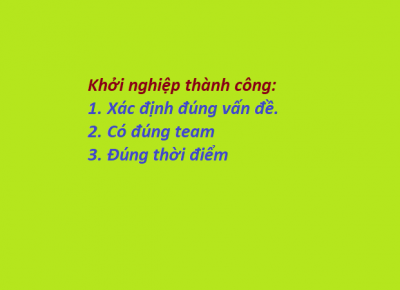Secrets of learning
What to do before class
Your instructor has assigned you certain readings from your textbook and possibly other sources as well. How will you learn all of this information?
Secret #1: Use the 3R technique: Read. Recite. Review.
Let’s say you’re supposed to read a chapter by your next class. Use these three basic steps:
- Read a section of the chapter. Then close the book and hide your notes.
- Recite (speak aloud) everything you can remember about what you've just read. You don’t need fancy equipment. You can recite to yourself, to a friend, to your cat or even to your coffee mug or a plant in your room.
- Review the section by reading it again to correct anything you got wrong, or to revisit important information that you overlooked when you recited.
In one study comparing the effectiveness of various study techniques, students in three groups read long, technical encyclopedia entries (McDaniel, Howard & Einstein, 2009). One group used the 3R technique; a second read the articles twice and did nothing else; a third read the articles once but took notes while reading. A week later, everyone took the same test. The students who had used the 3R technique did much better on the test than students who used the other techniques. What’s more, it took students less time to use the 3R technique than reading and taking notes.
One reason this method works so well is that when you practice the second R, you see immediately what you had trouble understanding, learning and remembering, so you know what to concentrate on when you do the third R: review.
Secret #2: Dig deep.
You can’t read your textbook the same way you check your Facebook page, at a quick, superficial level. Many students assume that the mind is a bin or a sponge; you just pour information into it, and it stays there. Sorry. For the information to stay there, you have to process it until you get it. When you put in effort to understand something, you are signaling your brain that the “something” is worth remembering. An excellent way to do this, as you read, is to try to connect the new information to information you already know. Suppose you read about the four basic perspectives of psychological science (biological, learning, cognitive and sociocultural). Taking each one, you could think of examples you have read about or that apply to your own life: "Many of my friends take medication to manage their depression or anxiety; that would follow from the biological perspective’s approach."
Secret #3: Use your imagination.
Students who visualize ideas remember them better than students who don’t. The key part of this technique is to make your images interact. Despite what you might read on all those “Train your brain!” websites, you don’t need to conjure up bizarre images; you just need to make the images interact (Wollen, Weber & Lowry, 1972). So when you read in chapter 4 that “glia cells” (from the Greek word for “glue”) are the most common cell in the brain and that they hold neurons in place, you could visualize squirting a big bottle of glue labeled “glia” under neurons.
Secret #4: Test yourself.
Suppose you've just read the material in the first section of a chapter, and it’s time for you to begin the recite phase. Start by trying to remember everything you can. Then look at the outline on the first page of the chapter and use it to jog your memory and remember even more. Check the terms in the margins, cover up their definitions and try to define them in your own words. Jot down your answers, or speak them into your computer, tablet or phone so you can play them back later. As you go along, make a note about anything you can’t remember, but don’t look up the answers yet. When you’re done, go back and see how well you knew the terms in the margins or answered the questions in the self-tests.
Now you’re ready to review. Go back to the beginning of your section in the chapter and read again. Keep in mind the parts that tripped you up as you’re reading; when you finish, make sure you can answer the questions you couldn’t last time.
What to do during class
Secret #5: Keep your head up and your pen down.
A lecture is not like a DVD. For one thing, you can’t hit the pause button. For another thing, if you’re not giving the lecture your full attention, you will miss something important and not even realize it. So when you’re in class, don’t talk to your friends, send text messages or search the Web for pictures of adorable kittens doing adorable things.
It’s crucial that you take good notes in class. There’s a balance to note taking: On the one hand, you want your notes to be accurate and complete; on the other hand, you don’t want them to be a transcript, because then the really important things are hard to find. Elliot Aronson (2010), who became one of the greatest social psychologists in the field, wrote this about his first term in college: “I discovered that I had never learned how to be a student. I didn’t even know the first thing about taking notes. I would sit in class, listening to the lecture, scribbling furiously. By the time midsemester exams came around, I pulled out my lecture notes and found they were virtually unintelligible.”
While you’re listening to your instructor, think about how what you’re hearing is connected to what you already know. Write down key words and phrases, not full sentences and paragraphs the way a court reporter would. The act of sifting through what you’re hearing and distilling it into its important components will help make that information more meaningful.
You may be thinking that if instructors let you record their lectures or post their slides online, you don’t have to do any note taking. But recordings and slides won’t do your thinking for you, and they don’t have to take the exams, either.
What to do after class
Secret #6: Process your notes.
As soon as you can after class, do what Elliot Aronson (2010) did. Having done poorly on his midterms, thanks to his lousy note taking, he came up with a new strategy: “At the end of every class, I would find a little nook — sometimes even the nearest stairwell — read over my scribbled notes, and neatly summarize them in a page or two. At the end of the semester, when it was time to prepare for the final, my notes described the heart of the course. More than that: They revealed the scope and pattern of the professor’s thinking and the way the lectures dovetailed with the readings. I had taken the first step toward mastering the art of getting to the essence of a topic... I found I was also learning to love to learn, and, perhaps most important, I was learning to think critically and challenge unsubstantiated assertions. For the first time in my life I understood what it was to be a student.”
That “aha!” experience can strike you, too. When you review your notes, zero in on the information from class. If your notes are dotted with doodles, arrows and asterisks, missing definitions and phrases that just don’t make sense, organize and rewrite them. Fill in the missing definitions or other information by consulting your textbook or your friends’ notes, or asking a teaching assistant or instructor. These activities are another way of testing yourself and filling the gaps in what you don’t know.
Studying for exams
Secret #7: Once you learn it, don’t drop it.
You might be tempted to skip the parts of a chapter that you feel sure you know. Don’t do it. Instead, take advantage of a powerful research finding: Students who retest themselves by recalling information they could remember earlier do twice as well on an exam as students who skipped retesting themselves on familiar material (Karpicke & Roediger, 2007).
Secret #8: Forget about cramming!
Somewhere along the line, many students come to the conclusion that studying for exams means staying up all night, drinking coffee by the gallon and rereading their textbook and notes so many times that their eyeballs bleed. Indeed, most students decide what to study next based on whatever is due next (or overdue). Few students make a study schedule ahead of time and then stick to it (Kornell & Bjork, 2007).
The problem with cramming is that it gives you a misplaced sense of confidence that you know the material. In fact, although you will probably remember some of it for a while, you won’t remember it for long. That’s because you have not taken the time to repeatedly organize the information in your memory, connect it to what you already know, and pave the new mental roads that will help you retrieve information later, as on the exam. That’s one of the reasons many students “blank out” when they actually take the test.
There is an alternative to those painful all-nighters. Rather than cramming all your attempts to test yourself into one giant awful block of time, test yourself regularly throughout the semester, say once a week (Bjork & Bjork, 2011), and be sure to include material you already know in your regular testing sessions. The secrets to doing well on a test tomorrow aren’t different from the secrets to doing well all semester.
Secret #9: Forget about your “learning style.”
If you’ve ever taken a test that tells you you’re a “visual” learner, does that mean you’ll have trouble taking in information in your lecture, especially compared to your classmates who have been told they are “auditory” learners? Happily, the answer is no. There is no evidence that people learn better when the method matches their preferences, and no evidence that using methods that don’t match their preferences are ineffective (Pashler et al., 2008). Visualizing material helps everybody, and so does plain old active listening. In fact, learning-style tests do not seem to do much of anything except make the companies that own them a lot of money. The nine secrets to learning work equally well for all kinds of students. This means you.
In the psychology major, you’ll satisfy your curiosity about human nature, gain insights into political and social issues and learn techniques you can use to gain control over your emotions, improve your memory, and reduce unwanted habits. We hope you will enjoy and remember what you read. But ultimately, a 10th secret of learning is this: No matter how good they are, no course and no textbook can do your work for you.
For reference, look at www.apa.org









